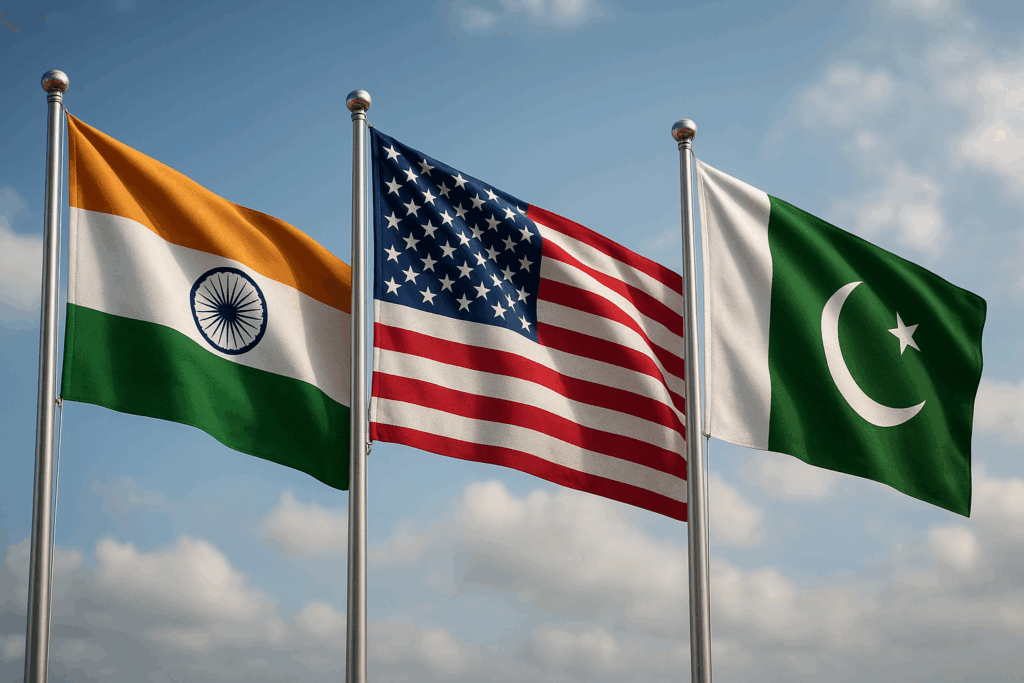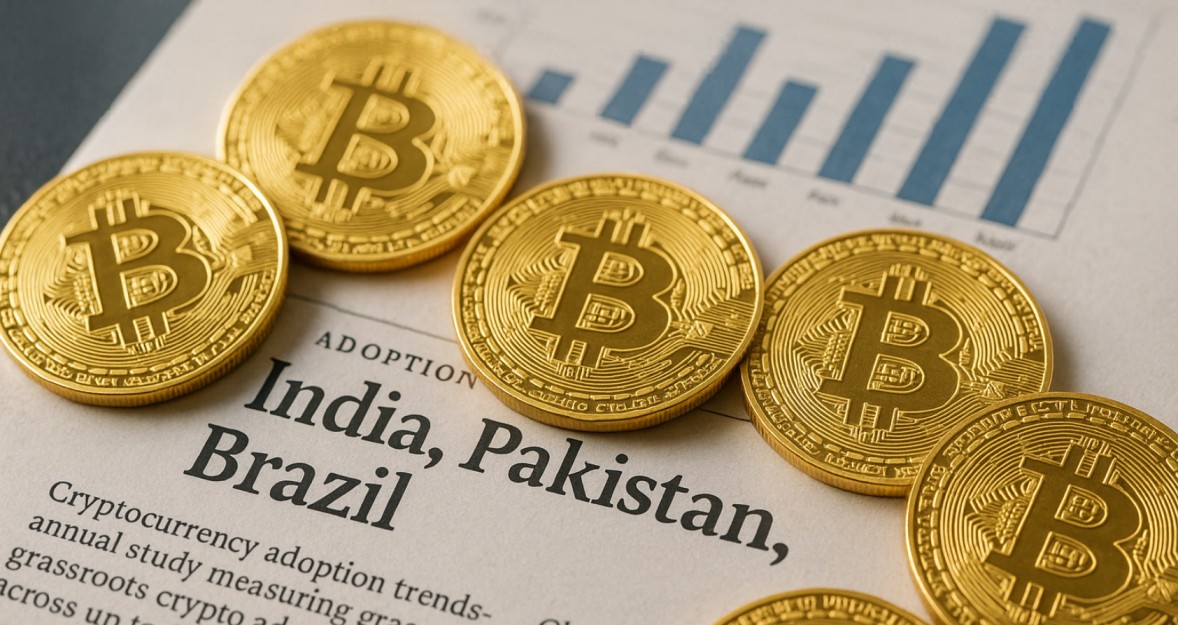The 2025 edition of the Chainalysis Global Crypto Adoption Index has revealed a new global order in crypto adoption. India secured the top spot, followed by the United States and Pakistan, with Vietnam and Brazil completing the top five. The index highlights not only the growing presence of crypto in emerging markets but also the institutional push from developed economies.
Why the Index Matters
The Chainalysis index is considered one of the most reliable benchmarks for tracking grassroots crypto adoption worldwide. Unlike price-focused or market-cap-based studies, it emphasizes how ordinary people, businesses, and institutions actually use crypto.
- Emerging markets such as India, Pakistan, and Vietnam show adoption driven by remittances, mobile payments, and limited access to traditional banking.
- Developed economies like the United States dominate on the institutional side, thanks to ETFs, stablecoin infrastructure, and clearer regulation.
This duality—grassroots adoption in developing nations and institutional adoption in developed ones—shows the multifaceted role of crypto in today’s global economy.
Methodology: How Adoption is Measured
Chainalysis ranks 151 countries based on four key dimensions, normalized for population and purchasing power. The final score is calculated through a geometric mean, producing a score between 0 and 1.
Four Sub-Indices Used in 2025:
- On-chain value to centralized services, weighted by GDP per capita.
- On-chain retail value to centralized services, focused on small transactions under $10,000.
- On-chain value to DeFi protocols, showing decentralized finance participation.
- Institutional centralized service value, tracking large-scale transactions above $1 million.
Important Update in 2025:
- The “retail DeFi” sub-index was removed, as it overstated niche activity.
- A new institutional activity sub-index was introduced to reflect the rise of large-scale crypto flows, especially from ETFs and professional trading.
Top Five Countries: Performance Breakdown
| Country | Overall Rank | Retail (Centralized) | Centralized | DeFi | Institutional |
|---|---|---|---|---|---|
| India | 1 | 1 | 1 | 1 | 1 |
| United States | 2 | 10 | 2 | 2 | 2 |
| Pakistan | 3 | 2 | 3 | 10 | 3 |
| Vietnam | 4 | 3 | 4 | 6 | 4 |
| Brazil | 5 | 5 | 5 | 5 | 5 |
India ranked first in every category, demonstrating both retail and institutional strength, while the U.S. excelled in institutional flows but ranked lower in small-scale retail activity. Pakistan stood out as a leader in grassroots retail adoption.
Regional Trends
Asia-Pacific: The Global Growth Engine
The APAC region led all regions with a 69% year-over-year increase in on-chain value received, reaching $2.36 trillion. India, Pakistan, and Vietnam were the largest contributors, highlighting Asia’s dominance in grassroots adoption.
Latin America & Sub-Saharan Africa
- Latin America saw 63% growth, powered by both retail and institutional activity. Brazil played a crucial role in this surge.
- Sub-Saharan Africa recorded 52% growth, with adoption linked heavily to remittances and daily financial use cases.
North America & Europe
- North America posted 49% growth, fueled mainly by institutional adoption and ETF-driven inflows.
- Europe grew by 42%, with a mix of DeFi adoption and corporate adoption.
- The U.S. led fiat-to-crypto inflows, handling over $4.2 trillion, more than four times that of any other country.
Country Highlights
India
India topped the index across all four categories—retail, centralized, DeFi, and institutional. This reflects the country’s mobile-first economy, growing digital asset use for remittances, and widespread retail participation.
United States
The U.S. climbed to second overall, largely thanks to institutional inflows. Spot Bitcoin ETFs, regulatory clarity, and the dominance of U.S.-based stablecoins like USDT and USDC have pushed adoption to historic highs. Stablecoin usage in the U.S. alone processes over $1 trillion monthly.
Pakistan
Pakistan placed third overall and second in retail centralized activity. The country has embraced crypto at both a grassroots and policy level.
- In 2025, the government established the Pakistan Crypto Council (PCC), chaired by the Finance Minister.
- The PCC introduced a Strategic Bitcoin Reserve and allocated 2,000 MW of surplus energy to crypto mining and AI data centers.
Vietnam
Vietnam ranked fourth, with adoption driven by small retail transactions and increasing DeFi use. Regulatory reforms in 2025 added further clarity, boosting both retail and institutional confidence.
Brazil
Brazil, ranked fifth, continues to lead in Latin America. Its strong mix of institutional investors and grassroots retail activity highlights its balanced adoption profile.

Key Takeaways
- Emerging Markets Drive Retail Adoption
India, Pakistan, and Vietnam showcase crypto’s utility for financial inclusion, remittances, and alternative savings. - Institutional Power in Developed Economies
The U.S. has become the global center for large-scale adoption, led by ETFs, stablecoins, and regulated exchanges. - Methodology Reflects Market Maturity
The new focus on institutional activity acknowledges crypto’s evolution beyond grassroots usage. - Policy and Infrastructure Matter
Countries like Pakistan and Vietnam show how proactive regulation and infrastructure investment directly boost adoption rankings. - Stablecoins as the Backbone of Adoption
Stablecoins remain the central pillar of cross-border flows, retail transactions, and institutional adoption worldwide.
Conclusion
The 2025 Global Crypto Adoption Index underscores the dual character of crypto growth: emerging nations are leveraging digital assets for access and inclusion, while developed economies are institutionalizing crypto through ETFs, stablecoins, and corporate adoption.
With India, the U.S., and Pakistan leading the way, it’s clear that the future of crypto adoption is not tied to a single region or use case—it is both global and diverse, shaped by local needs and global capital alike.











